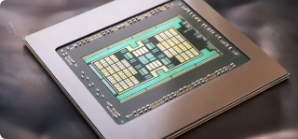The Rise of Flexible, Sustainable Circuitry Beyond Silicon
1/15/2025 5:52:09 PM
As silicon-based semiconductors dominate modern electronics, a quiet revolution is unfolding in the realm of organic materials. Comprising carbon-rich polymers and molecular assemblies, organic electronics are emerging as a transformative technology, enabling flexible displays, stretchable sensors, and eco-friendly circuits that defy the rigid limitations of traditional silicon. This article explores how advancements in organic semiconductors, printing technologies, and material science are opening new frontiers in wearable devices, sustainable energy, and next-generation electronics.
The Limitations of Silicon: A Case for Alternatives
Key Technological Breakthroughs
1. Flexible Displays: Redefining Visual Interfaces
Organic Light-Emitting Diodes (OLEDs) have already revolutionized consumer electronics, with smartphone and TV manufacturers leveraging their thinness, vibrant colors, and energy efficiency. But recent advancements go beyond flat screens: researchers at the University of Cambridge have developed rollable OLED panels with a bending radius of just 1mm-flexible enough to wrap around a human finger without damage . These displays use solution-processed organic semiconductors, reducing production costs by 30% compared to vapor-deposited counterparts while maintaining a lifespan of over 10,000 hours .
Beyond entertainment, flexible OLEDs are transforming medical devices. A 2024 study in Nature Electronics demonstrated a stretchable OLED patch capable of monitoring electrocardiograms (ECGs) and emitting therapeutic light simultaneously, adhering seamlessly to curved body surfaces without restricting movement .
2. Printed Electronics: The Assembly Line of the Future
Printing technology is the cornerstone of organic electronics, enabling mass production on flexible substrates at scale. Inkjet-printed transistors now achieve mobility rates of 5 cm²/(V·s)-sufficient for low-power applications like RFID tags and smart labels . Companies are pushing the envelope further: a collaborative project in Europe has developed a roll-to-roll printed circuit board (PCB) process, depositing conductive silver inks and organic dielectrics onto 100m-long polyimide films at a speed of 50m/min . This reduces material waste by 80% compared to traditional subtractive PCB manufacturing, while enabling circuits as thin as 50 microns-thinner than a human hair.
For wearable tech, printed organic sensors offer unprecedented comfort. A team at Stanford University created a skin-mounted humidity sensor using PEDOT:PSS ink, which detects sweat levels with 99.2% accuracy while weighing just 0.3 grams . The sensor integrates seamlessly with printed organic batteries, forming a fully flexible power-sensing unit ideal for athletic performance monitoring.
3. Sustainable Electronics: From Cradle to Grave
One of organic electronics' most compelling advantages is their environmental profile. Many organic materials are derived from renewable sources-for example, polythiophene can be synthesized from sugarcane byproducts-and some are fully biodegradable. Researchers at ETH Zurich have developed a compostable organic transistor using cellulose nanofibers and chitosan, which degrades completely in soil within 12 weeks while maintaining operational stability for 6 months . This technology could eliminate e-waste in single-use devices like agricultural sensors or medical patches.
Even non-biodegradable organic circuits offer sustainability benefits through energy-efficient production. Organic photovoltaic (OPV) cells, which convert sunlight to electricity, require 50% less energy to manufacture than silicon solar panels and can be integrated into building facades as translucent windows. A 2025 report by IDTechEx forecasts that the global market for organic photovoltaics will reach $12 billion by 2035, driven by demand for lightweight, flexible solar solutions in electric vehicles and remote IoT devices.
Challenges and the Path to Mainstream Adoption
Despite their promise, organic electronics face significant hurdles:
Performance Gaps: Organic transistors still lag behind silicon in speed and reliability, with switching speeds capped at ~1 MHz compared to silicon's GHz-range capabilities.
Environmental Stability: Moisture and oxygen degrade organic materials, requiring hermetic packaging that adds cost and thickness.
Scale-Up Complexity: Achieving uniform material deposition over large areas remains a technical challenge, particularly for high-resolution applications.
The industry is addressing these issues through material innovation. Researchers at Tsinghua University recently reported a hybrid organic-inorganic semiconductor that combines the flexibility of PEDOT with the stability of zinc oxide, boosting electron mobility to 20 cm²/(V·s) while resisting humidity for over 1,000 hours . Meanwhile, machine learning is optimizing ink formulations: a team at MIT used AI to screen 10,000 organic molecules, identifying a new thiophene derivative that enhances transistor lifespan by 40% .
The Future Landscape: Where Organic Meets Silicon
Rather than replacing silicon, organic electronics are poised to complement it, creating hybrid systems that leverage the strengths of both technologies. Imagine a silicon microprocessor paired with an organic flexible display and printed sensor array, all integrated into a single bendable device. This symbiosis is already evident in flexible hybrid electronics (FHE), which combine inorganic semiconductors for high-speed processing with organic components for flexibility and low-power sensing.
As the electronics industry prioritizes sustainability and user-centric design, organic materials are no longer a niche curiosity-they're a strategic imperative. From wearable health monitors that conform to the body to energy-harvesting window panes that power smart cities, organic electronics are rewriting the rules of what circuits can be: flexible, sustainable, and infinitely adaptable.
The journey from lab to market will require collaboration across disciplines-material scientists, engineers, and policymakers must work together to standardize processes, improve performance, and build recycling infrastructure. But make no mistake: the age of silicon isn't ending; it's evolving-into a future where organic and inorganic electronics coexist, each contributing to a more innovative, sustainable world.
The Limitations of Silicon: A Case for Alternatives
Silicon has reigned supreme in electronics for decades, but its inherent rigidity and complex manufacturing processes pose challenges for emerging applications. Traditional silicon chips require high-temperature fabrication (exceeding 400°C), making them incompatible with flexible substrates like plastic or paper. Additionally, the industry's reliance on rare earth metals and energy-intensive lithography processes raises environmental concerns, with semiconductor manufacturing accounting for 4% of global industrial water use and 1.5% of carbon emissions .

Key Technological Breakthroughs
1. Flexible Displays: Redefining Visual Interfaces
Organic Light-Emitting Diodes (OLEDs) have already revolutionized consumer electronics, with smartphone and TV manufacturers leveraging their thinness, vibrant colors, and energy efficiency. But recent advancements go beyond flat screens: researchers at the University of Cambridge have developed rollable OLED panels with a bending radius of just 1mm-flexible enough to wrap around a human finger without damage . These displays use solution-processed organic semiconductors, reducing production costs by 30% compared to vapor-deposited counterparts while maintaining a lifespan of over 10,000 hours .
Beyond entertainment, flexible OLEDs are transforming medical devices. A 2024 study in Nature Electronics demonstrated a stretchable OLED patch capable of monitoring electrocardiograms (ECGs) and emitting therapeutic light simultaneously, adhering seamlessly to curved body surfaces without restricting movement .
2. Printed Electronics: The Assembly Line of the Future
Printing technology is the cornerstone of organic electronics, enabling mass production on flexible substrates at scale. Inkjet-printed transistors now achieve mobility rates of 5 cm²/(V·s)-sufficient for low-power applications like RFID tags and smart labels . Companies are pushing the envelope further: a collaborative project in Europe has developed a roll-to-roll printed circuit board (PCB) process, depositing conductive silver inks and organic dielectrics onto 100m-long polyimide films at a speed of 50m/min . This reduces material waste by 80% compared to traditional subtractive PCB manufacturing, while enabling circuits as thin as 50 microns-thinner than a human hair.
For wearable tech, printed organic sensors offer unprecedented comfort. A team at Stanford University created a skin-mounted humidity sensor using PEDOT:PSS ink, which detects sweat levels with 99.2% accuracy while weighing just 0.3 grams . The sensor integrates seamlessly with printed organic batteries, forming a fully flexible power-sensing unit ideal for athletic performance monitoring.
3. Sustainable Electronics: From Cradle to Grave
One of organic electronics' most compelling advantages is their environmental profile. Many organic materials are derived from renewable sources-for example, polythiophene can be synthesized from sugarcane byproducts-and some are fully biodegradable. Researchers at ETH Zurich have developed a compostable organic transistor using cellulose nanofibers and chitosan, which degrades completely in soil within 12 weeks while maintaining operational stability for 6 months . This technology could eliminate e-waste in single-use devices like agricultural sensors or medical patches.
Even non-biodegradable organic circuits offer sustainability benefits through energy-efficient production. Organic photovoltaic (OPV) cells, which convert sunlight to electricity, require 50% less energy to manufacture than silicon solar panels and can be integrated into building facades as translucent windows. A 2025 report by IDTechEx forecasts that the global market for organic photovoltaics will reach $12 billion by 2035, driven by demand for lightweight, flexible solar solutions in electric vehicles and remote IoT devices.
Challenges and the Path to Mainstream Adoption
Despite their promise, organic electronics face significant hurdles:
Performance Gaps: Organic transistors still lag behind silicon in speed and reliability, with switching speeds capped at ~1 MHz compared to silicon's GHz-range capabilities.
Environmental Stability: Moisture and oxygen degrade organic materials, requiring hermetic packaging that adds cost and thickness.
Scale-Up Complexity: Achieving uniform material deposition over large areas remains a technical challenge, particularly for high-resolution applications.
The industry is addressing these issues through material innovation. Researchers at Tsinghua University recently reported a hybrid organic-inorganic semiconductor that combines the flexibility of PEDOT with the stability of zinc oxide, boosting electron mobility to 20 cm²/(V·s) while resisting humidity for over 1,000 hours . Meanwhile, machine learning is optimizing ink formulations: a team at MIT used AI to screen 10,000 organic molecules, identifying a new thiophene derivative that enhances transistor lifespan by 40% .
The Future Landscape: Where Organic Meets Silicon
Rather than replacing silicon, organic electronics are poised to complement it, creating hybrid systems that leverage the strengths of both technologies. Imagine a silicon microprocessor paired with an organic flexible display and printed sensor array, all integrated into a single bendable device. This symbiosis is already evident in flexible hybrid electronics (FHE), which combine inorganic semiconductors for high-speed processing with organic components for flexibility and low-power sensing.
As the electronics industry prioritizes sustainability and user-centric design, organic materials are no longer a niche curiosity-they're a strategic imperative. From wearable health monitors that conform to the body to energy-harvesting window panes that power smart cities, organic electronics are rewriting the rules of what circuits can be: flexible, sustainable, and infinitely adaptable.
The journey from lab to market will require collaboration across disciplines-material scientists, engineers, and policymakers must work together to standardize processes, improve performance, and build recycling infrastructure. But make no mistake: the age of silicon isn't ending; it's evolving-into a future where organic and inorganic electronics coexist, each contributing to a more innovative, sustainable world.



